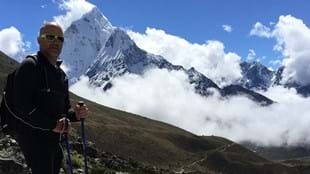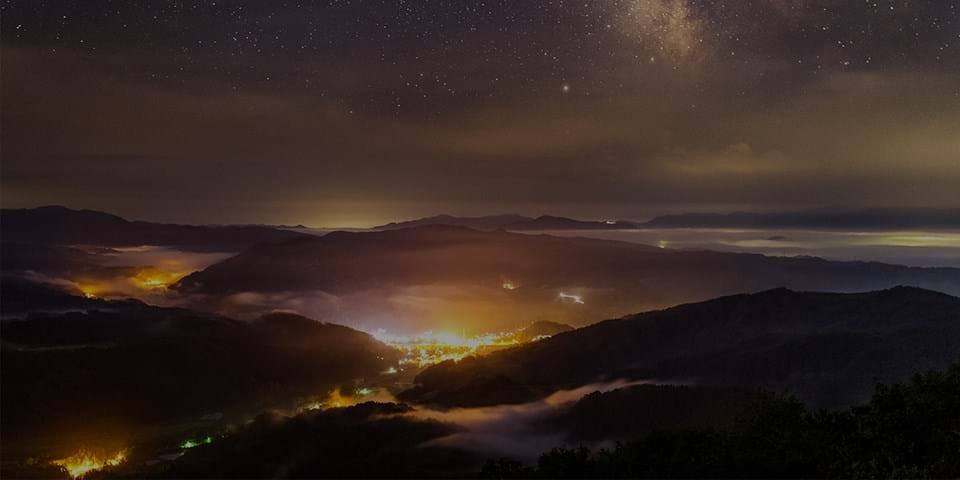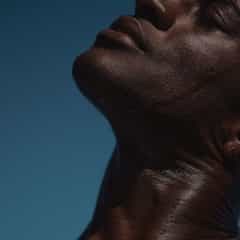Steven Ayers is used to being out of breath. As a fitness instructor and keen cyclist it’s all in a day’s workout. But a trip to Mount Everest tested him and his equally fit brother Bradley to the max.
The idea for an expedition to base camp came to Ayers after the devastating 2015 earthquake in Nepal. By day he is a 31-year veteran of the Department of Corrections in Minnesota where he is Captain of Security at Oak Park Heights Maximum Security Prison. By night he is the Lead Instructor at Xperience Fitness in Woodbury, MN where he teaches and attends a variety of group fitness and yoga classes.
Fitness and charity have long been intertwined for Ayers. An avid road cyclist and Rooster Racing member, he lives by the international group’s motto, “Do Good, Ride Hard, Live Well.” He holds three to four fundraisers each year, often using RPM classes as the vehicle to raise money to fight various diseases. In 2014, he joined Rooster Racing founder and former RPM Program Director, Dan McDonogh, on a group ride through the epic mountain stages of the Tour de France.
After the spring 2015 earthquake in Nepal Ayers saw another opportunity to live up to that motto. “Nepal is so reliant on tourism and after the earthquakes, it literally dried up,” he explains. More than 8,500 people died and thousands more were injured. “Nepal needed people to come and spend tourism money. In the fall of 2015, I committed to doing the trip.” He also committed to collecting funds to help rebuild a school for Nepalese children in need, raising $5,200.
To physically prepare for this 12-day trek, Ayers continued to teach his six classes per week. On top of this, he hit the Stillwater Main Street steps in his hometown with brother Bradley. “It’s 157 steps in total and is situated along the beautiful St. Croix Valley overlooking the St. Croix River. In Minnesota, it is about the very best place to train because of the number of steps. Many, many local people that are climbing mountains around the world train on these steps,” he says.
“My brother and I would train at least two times a week building up the number of repetitions as the months passed. The most repeats we did was 75 times up and 75 times down.” As if that wasn’t enough, they continued road cycling and playing competitive hockey as part of their training.
After a year of planning, training, and 21 hours of travel (not including layovers), the brothers embarked on their private trip with one Sherpa and one guide. But despite all that preparation, the altitude in the Himalayas still caught them by surprise.
“On day four of the trek, my brother had to be helicopter rescued,” says Ayers. “He was admitted to a Kathmandu hospital for four days and ended up having severe sinus, chest, and ear infections, and because of this he was suffering from high altitude sickness. This is a combination that, if not treated quickly, can have a bad outcome. He ended up leaving Nepal several days early. I continued to press on to Mt. Everest base camp with my Sherpa and guide.”
The altitude proved to be a constant challenge for Steven, as well. “I spent six days over 14,000 feet and, although I was burning thousands of calories every day, I wasn’t hungry and didn’t have an appetite. I had to force myself to eat. On top of that I was not able to sleep well. When I did fall asleep, I’d wake up sucking for air. It was as if I couldn’t get a full breath to satisfy the body. Oxygen is 48 percent at Everest Base Camp, so the body is reacting to the lack of oxygen. What carried me to push on was the excitement of realizing my dream. That was always in the front of my mind.”
When he finally arrived at his destination – 17,500 feet above sea level, he was awe struck and humbled. “Finally getting to Base Camp now seems surreal. The sights of all the mountains surrounding the area are so magnificent. I have never seen nature that beautiful. Everything was crystal clear, but it was eerily calm.”
Arriving at Kala Pattar (18,200 feet) at sunrise brought tears of joy. “This is the very best place and closest place to view Mount Everest’s summit. It was one of the best moments in my life – 20 years of interest in this place all came together.”
Ayers carries lessons from the mountains with him every day, including a richer approach to his yoga classes. “It might sound funny, but I have a ‘big picture’ outlook, and the stresses of daily life don’t seem as big,” he says. The Nepalese people and culture had a big impact on him. They have a very different way of life. They live on very little and work so physically hard. Most have very little material items and what they do have is very old and used, but they are a happy, kind and gracious people. At no time did I ever feel my security was threatened. The two major religions [Hinduism and Buddhism] are very interesting, and they co-exist without problems.”
So how can you top a trek to Everest? According to Ayers … by climbing it. “I’m considering attempting to summit Everest in the spring of 2018. I officially retire from my captain career after 32 years of service. I would need to live at base camp for two-plus months, so it couldn’t happen until after I retire.”
One thing’s for sure – he’ll continue to set his sights higher. “Life is so short and the richness of life is not material items, but experiences. Don’t be afraid of hard work to achieve your dreams.”

Carrie Knight is a BODYBALANCE Trainer and a BODYBALANCE and CXWORX Assessor Lead for Les Mills in the United States. She graduated from the University of Wisconsin – Madison with degrees in Broadcast Journalism and Political Science. Her background includes being a TV news anchor, radio talk show host, fitness writer, and recording voice overs. Carrie is thrilled to combine her love for fitness and journalism by writing for Fit Planet.








